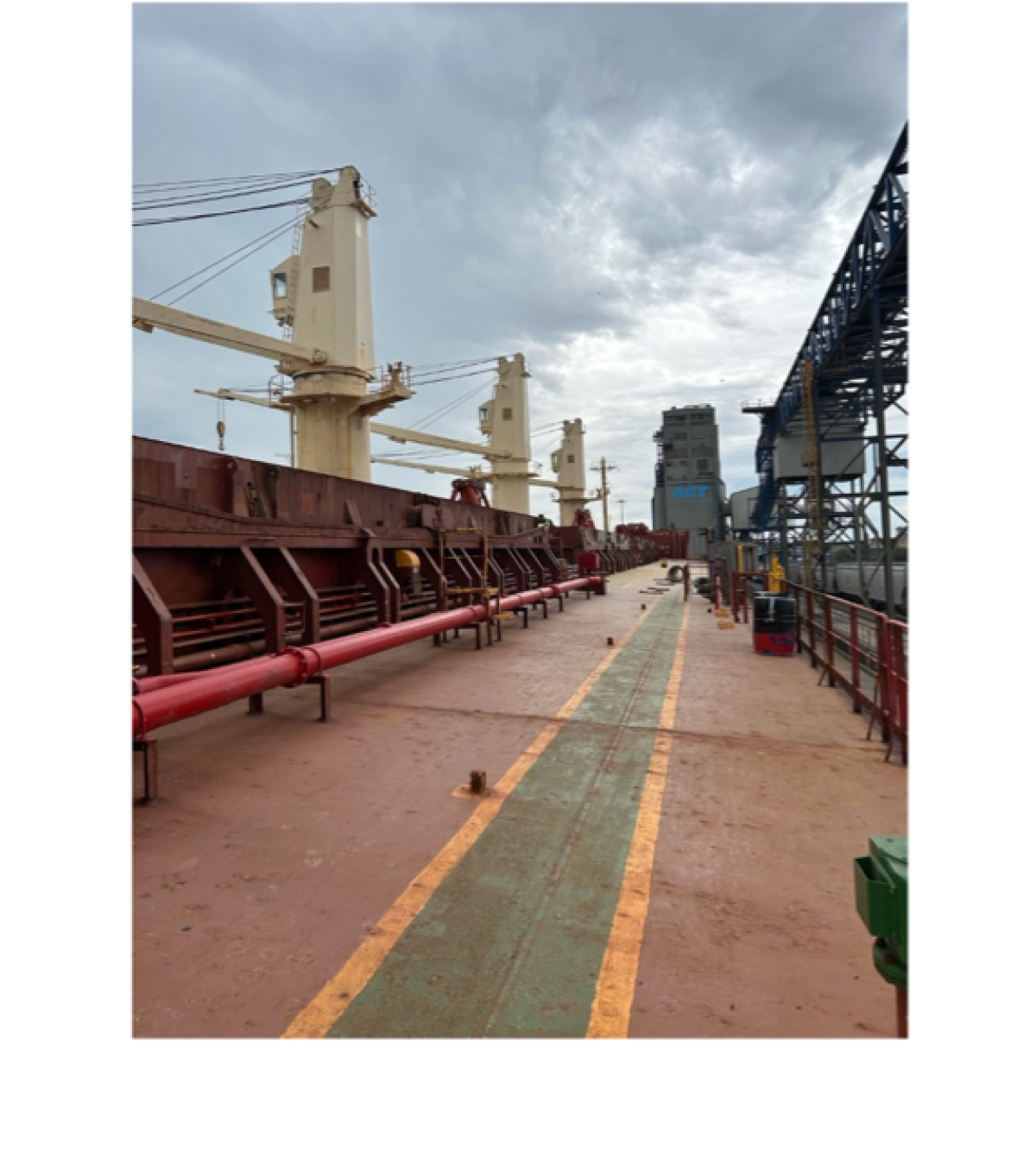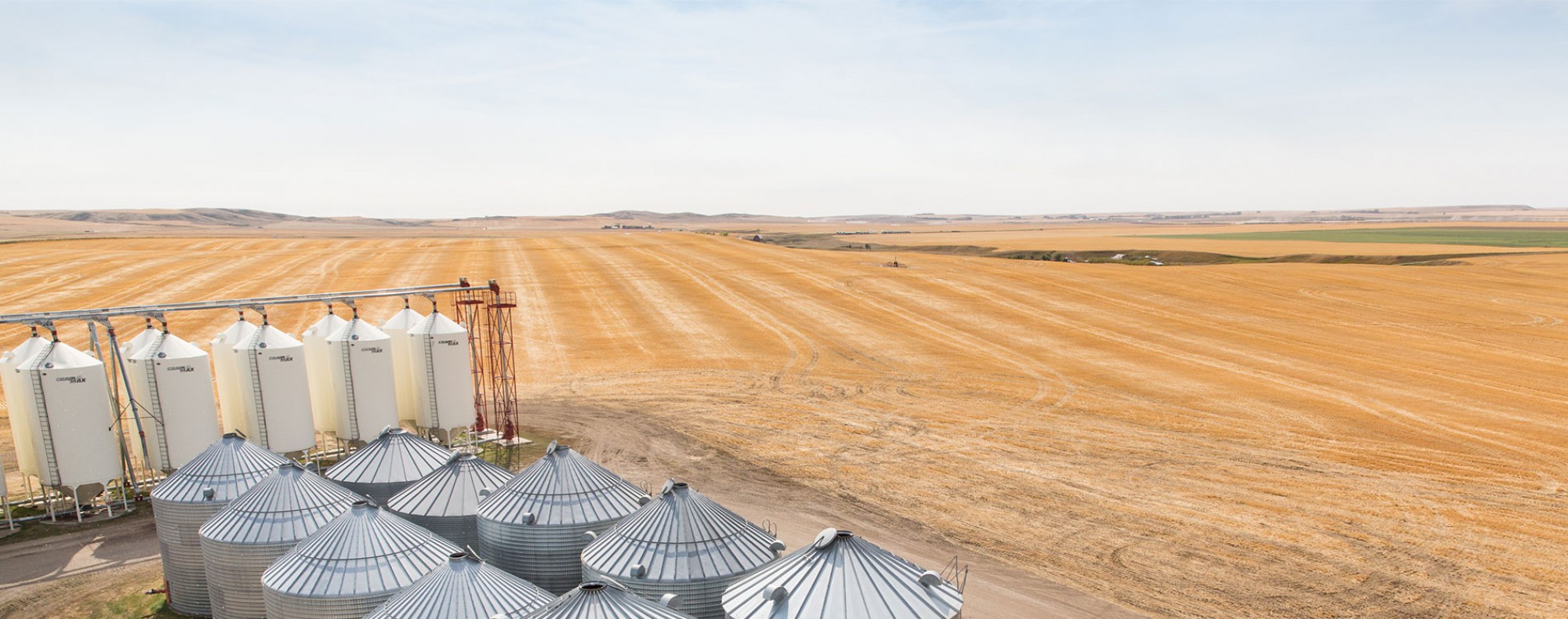Grain Growers of Canada Summer Meeting – Port of Vancouver
Much of the wheat and some of the barley grown in Alberta is consumed by people and livestock across the world. In a given year close to 80 per cent of wheat and around 15 per cent of barley grown in Alberta moves out of the province, typically by rail. Much of this grain ends up at the port in Vancouver, British Columbia, to great ready for export. During 2021-2022, the Canadian Grain Commission reported that around 7.56 million metric tonnes of wheat and 1.41 million metric tonnes of barley shipped out of Vancouver, accounting for over 50 per cent of Canadian grain exported to the world . Moving all this grain takes many steps and requires that a lot of things go right at the same time.
The Port of Vancouver operates seven different grain terminals shipping wheat, barley, oilseeds, and pulses. Our tour gave us a closer look at two grain terminals (Cascadia and Alliance Grain Terminal) and one containerized grain shipper. This firsthand experience provided valuable insights into the complexities of shipping Canadian grain to the world and underscores the importance of the advocacy work done on farmers' behalves to ensure that things keep running smoothly.
The Grain Loading Process
Grain terminals process hopper cars only when the railways deliver them. Once a grain car arrives, the unloading process is quick. For example, the Cascadia terminal (a partnership between Viterra and Richardson) can empty up to 300 cars per day. The grain is deposited into a receiving vestibule under the rail car, moved by a conveyor belt for testing and grading, cleaned to remove dockage, and then stored. Some grain elevators are more technologically advanced than others, with the whole process being quite automated. Terminals mostly rely on just-in-time deliveries and do not plan to store grains for long periods. Dockage from cleaning is pelletized and then sent to nearby feedlots, minimizing waste.
The Canadian Grain Commission (CGC) weights and grades bulk grain deliveries to ensure quality and delivery specifications. In each terminal the CGC has their own inspection office. It is fascinating to see the endless pipes in these terminals delivering grain every which way. One of these pipes delivers random samples of grain from the hopper car so the CGC can uncover any issues in a prompt manner before storing the grain.
Once the ship is docked, the grain is moved by conveyor belt to a spout which deposits it to a cargo hold. At the Cascadia terminal, the spout delivers grain at rates of up to 3,000 metric tonnes per hour. Captains must provide approval for the loading process to proceed, so part of the decision-making is not within the terminal’s control. However, during the tour, we saw the terminal and the captain agree to partially cover a cargo hold as to continue loading despite the rain. Over the course of the year, the Alliance Grain Terminal (partnership between Paterson GlobalFoods, Parrish & Heimbecker and North West Terminal) reportedly fills up around 46 vessels yearly, which is quite the feat considering delays in train deliveries and rain, which is always a concern for farmers and their customers.

Image: A ship waiting to be loaded at the AGT terminal. In Canada, grain is loaded via a spout connected to grain bins onshore. However, when the ship arrives at their destination, the cranes on-ship unload the grain with a large shovel.
Container Shipping
Container loading is quicker, with one container filled in about 90 seconds. At Columbia Containers, the covered facility makes rain inconsequential. Container-shipped grain does not need CGC inspection but must meet weight specification, with the CGC inspecting these scales periodically. Containers can be more costly, which can make it more expensive than bulk shipping. One 20-foot container (reportedly more efficient than 40-food containers) loads around 22 metric tonnes of grain while one handymax ship can load 30,000 to 40,000 metric tons of grain. The economics of transporting by container are quite different than by bulk, which means that container-shipping can be better suited for smaller shipments or to have product that meets certain specifications.
Challenges and Advocacy for Efficient Port Operations in Vancouver
While the grain loading process is efficient, several challenges still impact productivity at the port. Rail shipments are a constant source of concern, as these terminals are subject to the variable and unpredictable deliveries from the railways. As well, these terminals face local restrictions, such as being required to control for noise and dust, and in some locations, ensure that Vancouver resident views are not obstructed.
Given the port’s crucial role, it is vital for farmers and their international customers that it operates smoothly and grain can be delivered to global markets on-time to mitigate concerns related to the reliability of our supply.
Although Alberta grain fields are far away from the port, it is important to advocate for efficient ports and railways to meet the rising demand for Canadian agricultural exports, and mitigate any service disruptions. Alberta Grains has long championed the need for better rail services and for smooth-running ports, the tour only underscored the intricacies of the many interconnected parts that make up the grain supply chain.
Learn more about GGC